What Does Sekisho Mean? Understanding Edo-Period Travel Checkpoints in Japan
sekisho (also written as sekisho, 関所) were official checkpoints established by the Japanese government, especially during the Edo period (1603–1868). These checkpoints played a crucial role in controlling the movement of people, goods, and information across the country. Today, they offer a fascinating glimpse into Japan’s feudal past and the strict travel regulations of the time.
What Is the Meaning of Sekisho (関所)?
Definition & Purpose
A sekisho was a government-manned barrier or checkpoint located on major roads, mountain passes, and borders between domains. Their main purposes were:
- To prevent the movement of weapons and suspicious individuals
- To control the travel of women, especially the families of feudal lords (daimyo)
- To collect tolls and monitor trade
The most famous sekisho were found on the Tokaido and Nakasendo highways, such as the Hakone sekisho and Shinagawa sekisho.
Why Were Sekisho Crucial in Edo Japan's Travel Control System?
During the Edo period, the Tokugawa shogunate enforced strict social order and security. The sankin-kotai system required daimyo to travel regularly to Edo (Tokyo), and sekisho checkpoints helped ensure loyalty by restricting the movement of their families and preventing rebellion.
For ordinary people, travel was not a simple matter. Passing through a sekisho required official permits, and unauthorized movement could result in severe punishment. This system shaped the way people experienced travel and contributed to the unique culture of Japan’s highways and post towns.
How Did Sekisho Checkpoints Work?
Procedures, Rules, and Travel Restrictions
- Travelers had to present travel permits (tegata) at each checkpoint.
- Guards inspected baggage for weapons and checked for unauthorized women leaving Edo.
- Merchants and pilgrims were often questioned about their purpose and destination.
- Some sekisho collected tolls or taxes on goods.
The phrase “No women out, no guns in” (出女入鉄砲, de-onna iri-teppō) summarized the main concerns of the authorities.
Famous Sekisho Checkpoints: Hakone, Arai, and Kiga
- Hakone sekisho (箱根関所): The most famous, located on the Tokaido highway. Now restored as a museum.
- Arai sekisho (新居関所) : On the border of Mikawa and Totomi provinces, also preserved as a historical site.
- Kiga-Sekisho (気賀関所): Located in Kiga, Hamamatsu City, this checkpoint was established by the Tokugawa shogunate in the early 17th century on the Honzaka Road (Hime Kaido) as a secondary checkpoint to Arai Sekisho. It monitored travelers and goods using alternate routes to the Tokaido. Today, visitors can explore restored buildings and exhibits about Edo-period travel and security.
Many sekisho sites can be visited today, offering reconstructed buildings, exhibits, and historical reenactments.
The Legacy of Sekisho: Exploring Edo-Era Checkpoints Today
Although Sekisho checkpoints were abolished in the late 19th century during Japan’s modernization, their historical significance remains deeply embedded in the country’s culture. Today, visitors can explore reconstructed Sekisho sites, view artifacts, and learn about Edo-period travel restrictions through immersive museum exhibits and preserved gatehouses.
These checkpoints are not only featured in literature and traditional art, but also stand as educational landmarks that bring Japan’s feudal past to life. A visit to a Sekisho site offers valuable insight into the strict controls, social systems, and daily realities of travel during the Tokugawa era.
Sekisho FAQ: Meaning, Purpose, and Travel Rules
What is the meaning of 'sekisho' in Japanese history?
Sekisho (関所) means 'checkpoint' or 'barrier' in Japanese. During the Edo period (1603–1868), sekisho were government-manned checkpoints set up on key roads and borders to control the movement of people, goods, and information.
Why were sekisho checkpoints important in Edo Japan?
Sekisho checkpoints were vital for maintaining control under the Tokugawa shogunate. They helped prevent rebellion by regulating travel, especially of women related to feudal lords, and restricted the movement of weapons and unapproved individuals.
How many sekisho checkpoints were there on the Tokaido?
There were dozens of sekisho checkpoints throughout Edo Japan. While not every post town had one, the Tokaido route—linking Edo and Kyoto—featured major checkpoints like Hakone and Arai. The route had 53 post towns, known as the Tokaido Gojusan-tsugi (東海道五十三次).
What was checked at a sekisho?
Travelers had to present official travel permits (tegata), and guards would inspect baggage for weapons or contraband. Women, especially those leaving Edo, were closely monitored. The phrase “no women out, no guns in” (出女入鉄砲) summed up the main purpose of sekisho enforcement.
Can you visit sekisho sites in Japan today?
Yes. Many historic sekisho such as Hakone Sekisho, Arai Sekisho, and Kiga Sekisho have been preserved or reconstructed as museums. These sites let visitors explore Edo-period travel systems through exhibits, gatehouses, and reenactments.
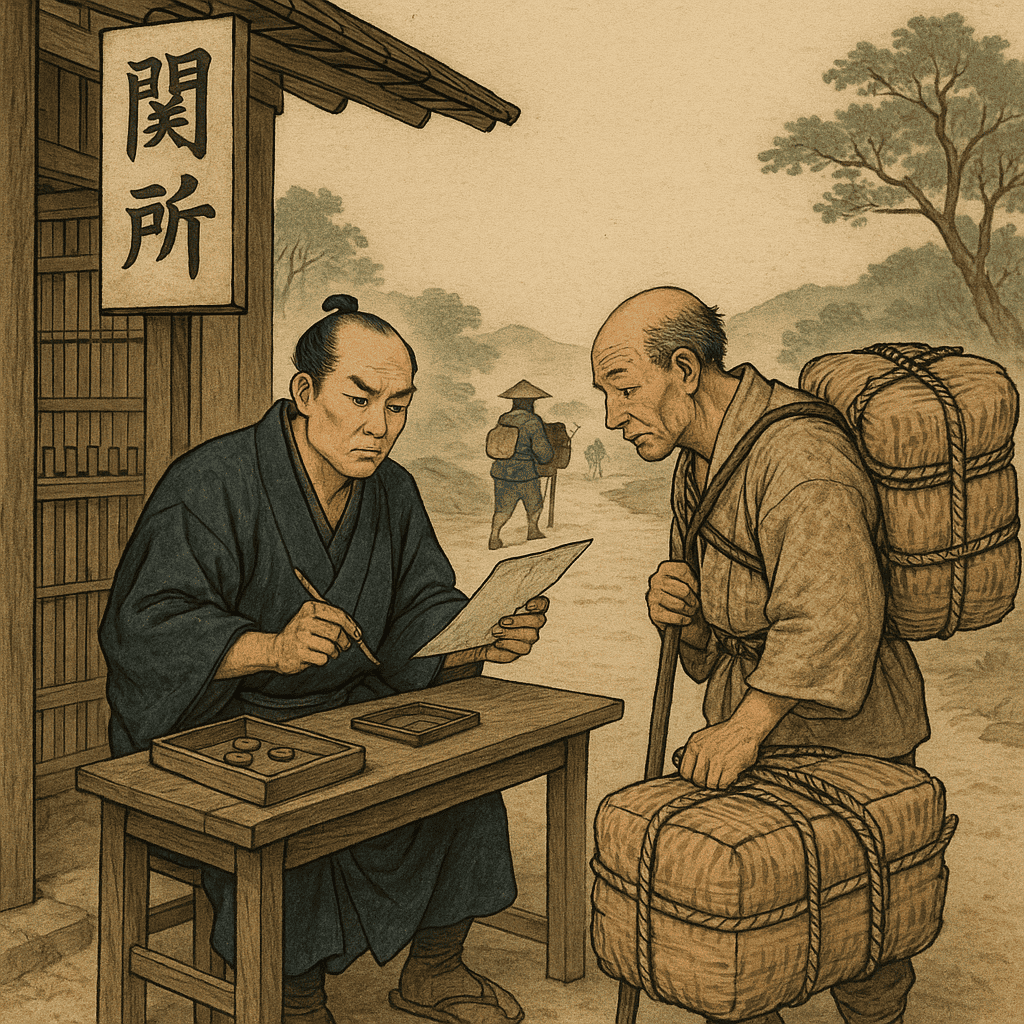
Guards at a sekisho checkpoint inspecting travelers and their baggage, as was common during the Edo period.
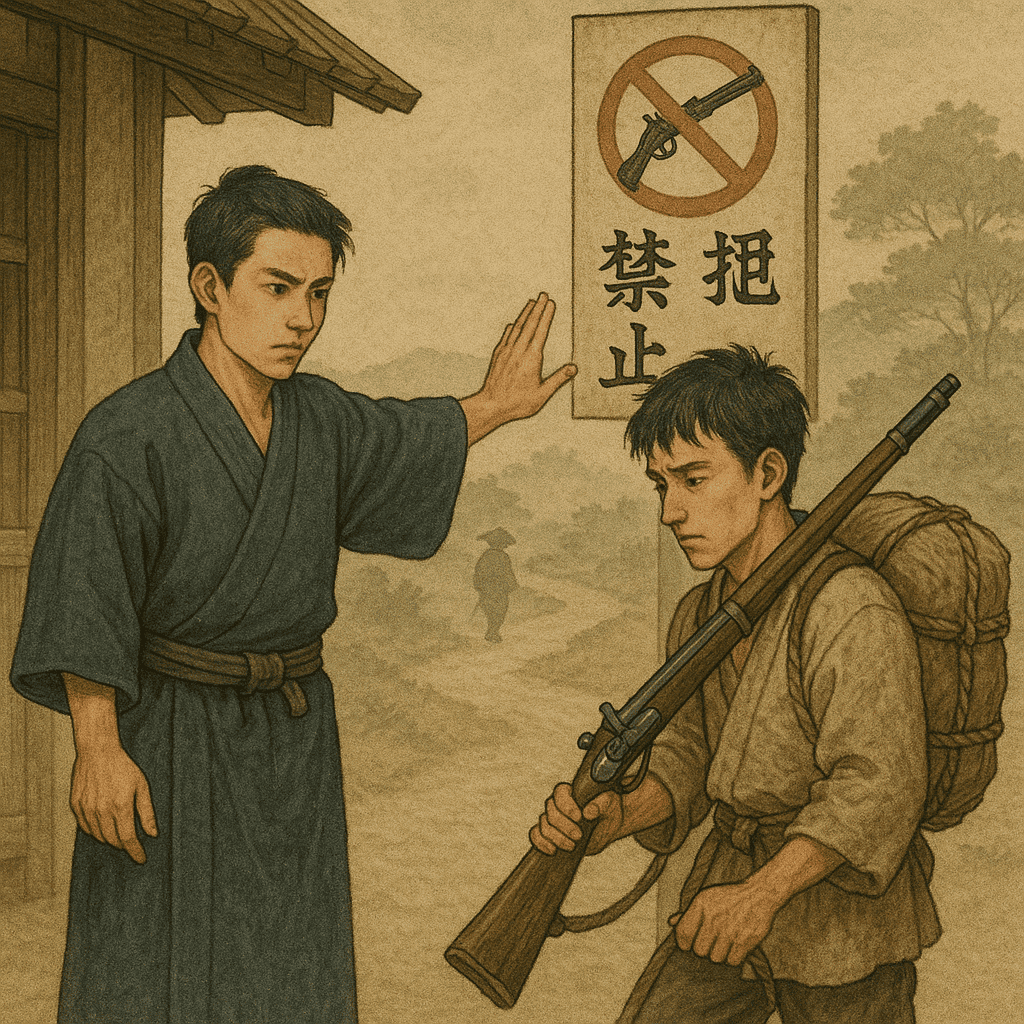
A historical sign at a sekisho checkpoint indicating that bringing guns was strictly prohibited.
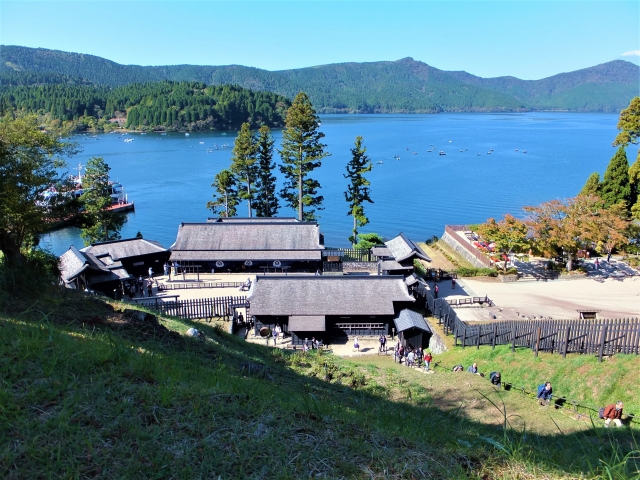
The restored Hakone sekisho on the old Tokaido highway, a key checkpoint in Edo Japan.
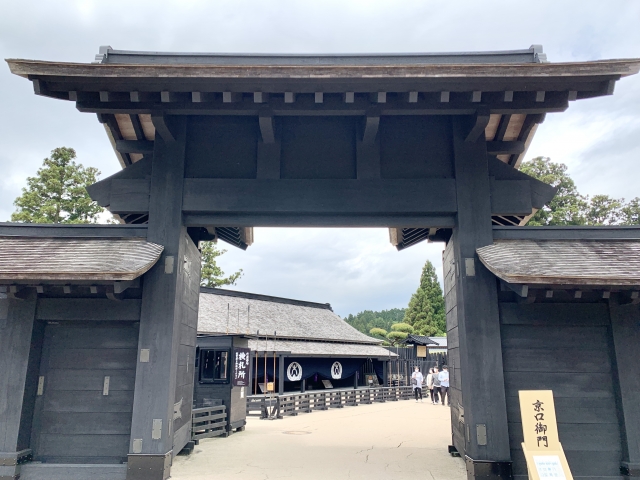
The main gate of a sekisho checkpoint, illustrating the imposing entrance travelers would encounter.
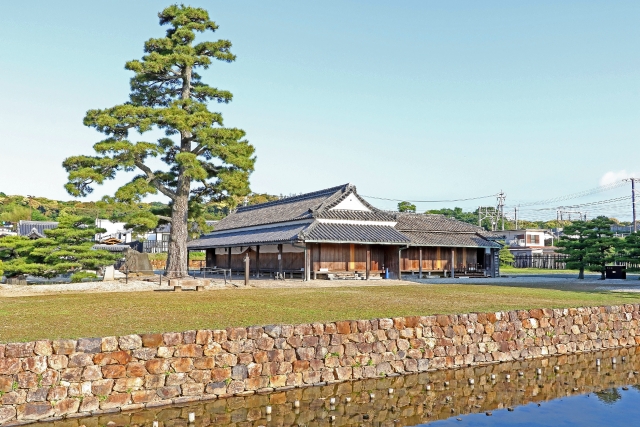
The preserved Arai sekisho, another important checkpoint on the Tokaido route.